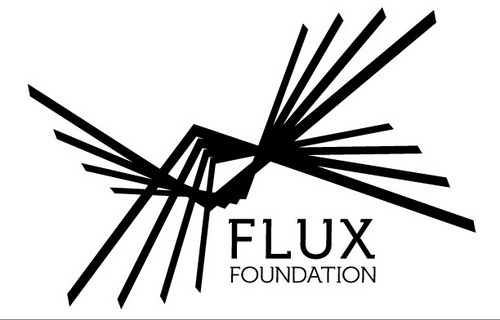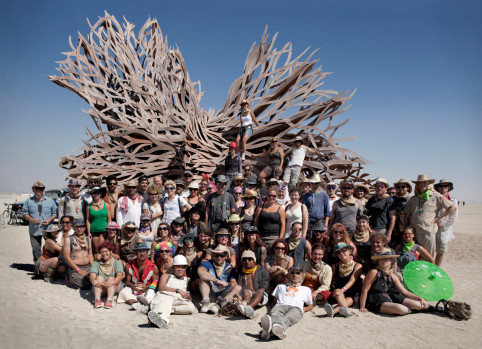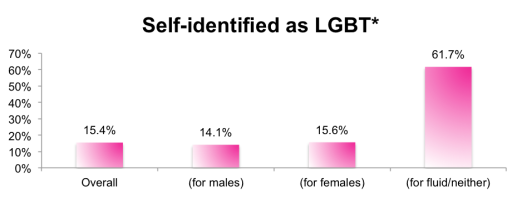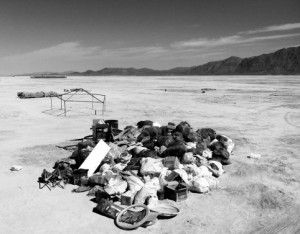In less than a week, over 70,000 people will converge on a dry lake bed in Northwestern Nevada to create Black Rock City, which hosts the festival known as Burning Man. Founded on the principle of radical self-expression, it’s natural that it would attract more than its share of folks who identify as queer. I am one of those people.
What has kept me coming back year after year since 2005 is that Burning Man makes me feel boring and pedestrian. Being a stereotypically flamboyant gay man, I was often the most “creative” or “out-there” person in family settings, at work, or in other social settings.
My first trip to the playa (the term used to refer to the dry lake bed) made me realize just how many other people had similar approaches to expressing themselves, many of whom had developed it to a much more sophisticated level than I had. It is comforting to have such a wealth of inspiration.
In this article I present the perspective of five other queer burners. I will be referring to people by their “playa name.” It is simply a snapshot, one of thousands that could be taken.
To read the complete original article on EDGE Media Network…
Kitten
During Kitten’s first burn in 1998, a particularly violent storm scattered all his belongings, which were then cemented into the ground by a three-inch downpour of rain. Desolate, he wandered the streets aimlessly until he stumbled upon a camp focused on providing mani/pedicures.
“My hands and feet were all cracked, and through the process of cleaning, moisturizing and painting my nails I became much more hopeful. It made me appreciate the value a camp could bring to my fellow burners.”
After centering himself, he was able to focus on getting some action.
“A lot of my awkwardness before going to Burning Man was from trying to fit into other people’s parameters of hotness. I was shocked that I could get as much play as I did out there, from the type of guys who wouldn’t have been interested in me in the city.”
Although Black Rock City had a population just over 10,000 at that point, there were already a couple of camps that had a queer sexual vibe to them.
“Bianca’s Smut Shack looked like a typical suburban home, except for the pornography spread throughout the place. It wasn’t necessarily an orgy happening, but people of all persuasions would have sex there. They also served grilled cheese sandwiches every night at 3 A.M. I heard about Jiffy Lube as the place to go for man-on-man action, but I couldn’t locate it until my second year.”
(Jiffy Lube, which started in 1995, sparked one of the greatest controversies at Burning Man in 2001, when a large mechanized illustrated sign of two men fucking was used to advertise their space. For the full story, visit www.pissclear.org/Articles/2002/coverstory_Jiffy%20Lube_1.html)
These early experiences, plus a few years being a part of another theme camp, inspired Kitten to help found Comfort & Joy.
“Our platform for success is to feed people well, and take care of their physical needs, so they’re able to do their art, whatever that may be.”
This philosophy helped grow the camp from 35 people in 2005 to 140 people by 2013. It features a large courtyard with several interactive art pieces, a large shade structure, a kitchen/commissary area, a gym area painted bright pink, two fire pits, a drag closet, an elaborate multiple head shower, and most famously, a 20 x 50′ tent that hosts workshops, performances, nightly dance parties, and all manner of sexual expression.
The entire camp is highlighted by large neon flags, which are visible from half a mile away.
Says Kitten, “If you are just walking by the camp, there is nothing overtly gay about it, but the bright colors of the flags and the art draw you in.”
Over the past five years, many queer camps have been requesting to be situated next to Comfort & Joy, creating a “gayborhood” in Black Rock City. A previous incarnation of the gayborhood existed from 2000-2008, during which a collection of queer/queer-friendly camps assembled themselves into Avalon Village.
Kitten would like to extend the philosophy of Comfort & Joy to the outside world. The group holds several parties a year in San Francisco, holds educational workshops related to helping fellow queers, and is building a relationship with the Paiute Indians, on whose ancestral land Burning Man takes place.
“As a queer person, I sympathize with other oppressed peoples,” said Kitten. “The Paiutes have a rich tradition of honoring Two Spirits (people believed to possess both the masculine and feminine). Unfortunately, due to colonization of their tribe, the Two Spirits are considered sinful by most other tribe members and most are closeted. Therefore, Comfort & Joy coordinates a food drive every year, where we encourage people leaving the burn to donate their leftover food at two sites marked by our neon flags. By identifying ourselves as Two Spirits while interacting with tribe members, we hope to change tribe members’ perceptions of Two Spirit individuals.”
(Learn more about the food drive at: https://www.facebook.com/events/1446811415604268)
Amanda Love
For Amanda Love, who first attended in 2007, “It was a very magical and very intense year. I went with my boyfriend at the time who was there to spread the ashes of a loved one, while at the same time my brother was battling cancer.”
One of the ways he processed this was by visiting the Temple, the second largest structure at Burning Man. Designed to allow contemplation, people place all sorts of notes, photographs, and objects relating to their thoughts. The entire structure is burned on Sunday night, the day after the “Man” is burned.
Amanda has been burning on and off since then, always as a member of Comfort & Joy. “They allow me to be included in a group without having to conform to a set type. No judgement happens, just open arms.”
As a hairdresser, one of the ways he likes to participate is by providing manscaping, a service which has proven quite popular.
“I’ve had a line of twenty guys, both gay and straight, waiting for me to groom them.”
One of the straight guys would become erect every time Amanda held his junk to shave something.
“Lines are very fuzzy out there,” said Love. “Sometimes guys are horny, but they don’t really know where they’re going with it. I’m not going to be the one to shove them over that line, so I’m gentle about those things.”
What Amanda appreciates the most about Burning Man is the overall environment. “Burning Man creates so many different flavors of spaces for people to explore their identity, all crammed right next to each other. It brings out the best in most people. The intention behind something is where you find the magic.”
Ariel Pink Pants
After driving from the East Coast in 2005 in a biofueled bus with two other people, Ariel Pink Pants and her pals named their first camp “Unifried.”
“My first year was about my own self-experience, but it developed into a desire to give people like me a place to shine,” said Ariel. “I was sitting on the playa with my friend when we realized there was no camp talking about trans issues.”
Inspired by her experiences at Comfort & Joy and Camp Beaverton (whose members are primarily queer women), Ariel helped create Gender Blender in 2009, “to give gender queer people a safe space, and to give cis-gendered people a place to explore.” Their first year was a bit rocky but instructive.
“We were placed on the Esplanade (the most heavily trafficked road) by the Placement Committee, because they liked what we were doing and wanted us to get lots of exposure. Our neighboring camp had a much larger budget than we did, and it showed. They were so put off by the scrappiness of our camp they put an orange net fence between us. Since then, we have requested to be next to more sympathetic camps in the gayborhood.”
That experience gives Ariel pause about the supposed difference between Burning Man and what is often refered to as “default world.”
“Trans people do not have the same access to resources as the broader gay community does, or society in general. Most of our camp members are on low-income tickets and we run our camp on a shoe-string budget. I would like to see a discussion within the Burning Man community about how this sort of work can receive more support, particularly in light of the phenomenon of ‘plug n’ play’ camps, where attendees spend tens of thousands of dollars to have everything assembled and taken apart for them, without really adding anything to the Burning Man experience.”
In spite of these difficulties, Ariel is excited about the opportunities she is providing people.
“At our play parties, we have trans people of all stripes, gay men, lesbians, and straight people. What we are doing is unique even for Burning Man.”
Hysterica
“My first year was 1996,” Hysterica recalls. “We arrived at the entrance and were told by the lady standing there to drive 4.6 miles straight ahead, then turn 90 degrees and drive 2.5 miles. All this through a blinding dust storm. Somehow at the end of it, the storm lifted and we were in Shangra-La.”
Hysterica camped next to Mascara, which featured legendary club promoter Ggreg Taylor (who would arrive on-playa fully decked out in evil clown make-up, sometimes dripping with lit candles on his shaved head), and drag artiste Phatima Rude, who was fond of lounging in a play pen.
One morning Hysterica and his playa boyfriend (term used to describe someone you meet and hang out with only at Burning Man) started a tradition that lasted several years, The Romp of the Playa Hookers.
“We came up with the idea of being playa hookers,” he said. “We got all scantally dressed up and walked all over town, amusing people and causing mischief. The next year, we had 20 more people along with us. I’ve tried to retire it several times but so many people would come up to me the next year asking to be a part of it.”
He was and is thrilled by how friendly people are on the playa. “Burning Man has a very bisexual energy,” said Hysterica. “People in general are very kind and flirtacious. One Sunday night after Temple Burn, I was riding my bike around, looking for one last party. I struck up a conversation with a straight man, who then confided he would like to experiment with another man. So we went back to my tent and had a lovely time.”
Mucho
Mucho heard about Burning Man for almost a decade before finally attending with his partner Matt in 2010. “We felt very welcomed,” he said “A lot of care was taken to make us feel a part of our camp and of Burning Man in general.”
He immediately sought out ways to participate in the wider Burning Man community, including joining the Rangers, the volunteer force of intermediaries between law enforcement and the burners.
“One year, I often worked alongside a straight ex-navy guy, who was very cool about me being gay, and felt comfortable telling me intimate things about himself. People out there are very open about things. They break down barriers and share.”
Last year he helped create the art car dubbed BAAAHS (Big Ass Amazingly Awesome Homosexual Sheep), a school bus converted into a giant sheep/mobile sound system.
“I was a ‘rear entry specialist,’ developing the chute through which people would enter BAAAHS. When we’d meet people driving around the playa, they’d get a big thrill out of sliding into its asshole.”
Burning Man inspired Mucho and Matt to relocate to San Francisco from New York to be closer to a larger concentration of burners. “We’re not fond of circuit parties,” he said. “Burner parties have a much broader array of people who all comfortable around each other and are creating amazing spaces.”
Decompression
Because Burning Man is such a magical environment, many people get depressed when it is over and they have to return to the default world.
I used to feel this way, until I finally relocated to San Francisco last year after attending Burning Man for nine years. Just like Black Rock City, San Francisco can be very physically and emotionally challenging, but it’s also full of dynamic, creative people who gently push me to be a better person. Burning Man is the natural by-product of this city’s ability to foster all kinds of people, especially queer ones.
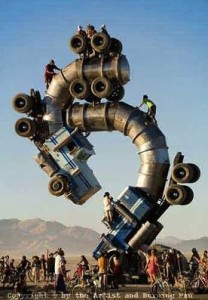
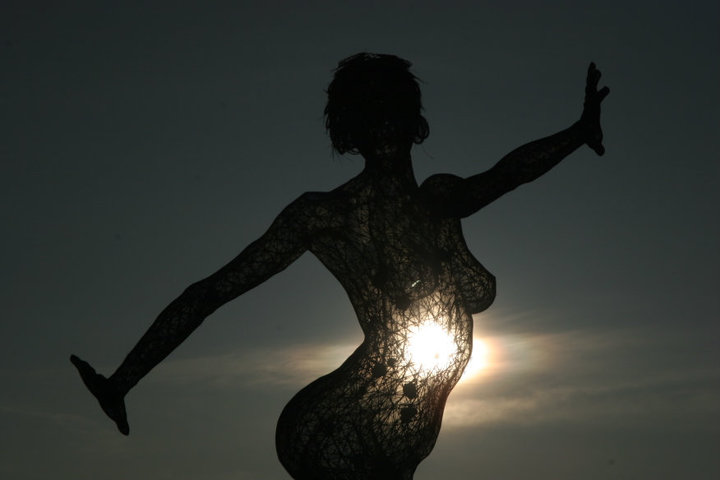
 A personal note from Toaster: While I have many people to thank it cannot go without mentioning Mario Cisneros of Moonbow camp who left us in 2012. He called me on the phone days before he left the earth and gave me the most amazing pep-talk.
A personal note from Toaster: While I have many people to thank it cannot go without mentioning Mario Cisneros of Moonbow camp who left us in 2012. He called me on the phone days before he left the earth and gave me the most amazing pep-talk. One of the earliest people on the queer burner train was Kitten from Comfort & Joy. He has been a fantastic ally in many of the projects initiated by this group.
One of the earliest people on the queer burner train was Kitten from Comfort & Joy. He has been a fantastic ally in many of the projects initiated by this group.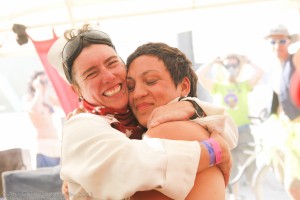 3 of the Mayors of Camp Beaverton have also been fantastic partners in this process and that includes Bucket, Foxy and Glo. It was hard getting in and meeting this amazing group of people but what fantastic people.
3 of the Mayors of Camp Beaverton have also been fantastic partners in this process and that includes Bucket, Foxy and Glo. It was hard getting in and meeting this amazing group of people but what fantastic people.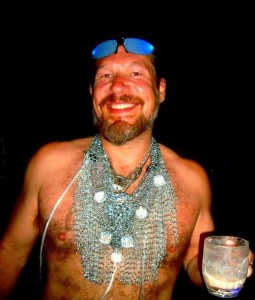 Scott Beardette from camp Conception has also been a huge asset and partner over the years. His ability to network, troubleshoot and respond to community issues is amazing.
Scott Beardette from camp Conception has also been a huge asset and partner over the years. His ability to network, troubleshoot and respond to community issues is amazing. Cyndi Vee and Pink Pants from Gender Blender have been rock stars in this community. Running the largest trans/fluid sexual identity camp at Burning Man. Not only that, has really brought it to San Francisco Decom and have been a great ambassadors for Trans issues in our culture.
Cyndi Vee and Pink Pants from Gender Blender have been rock stars in this community. Running the largest trans/fluid sexual identity camp at Burning Man. Not only that, has really brought it to San Francisco Decom and have been a great ambassadors for Trans issues in our culture.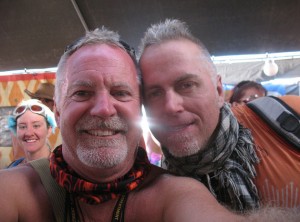 And Ed Edmond and all his amazing people out of Burner Buddies who have also hosted the after party for the Gay Pride parade for… more years than I can count. The also hand out the official Gay Cards!
And Ed Edmond and all his amazing people out of Burner Buddies who have also hosted the after party for the Gay Pride parade for… more years than I can count. The also hand out the official Gay Cards!